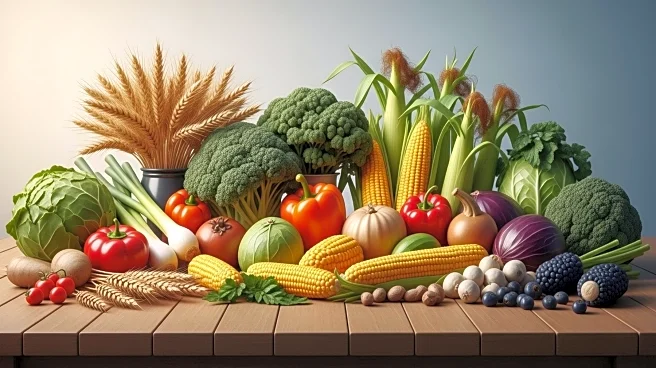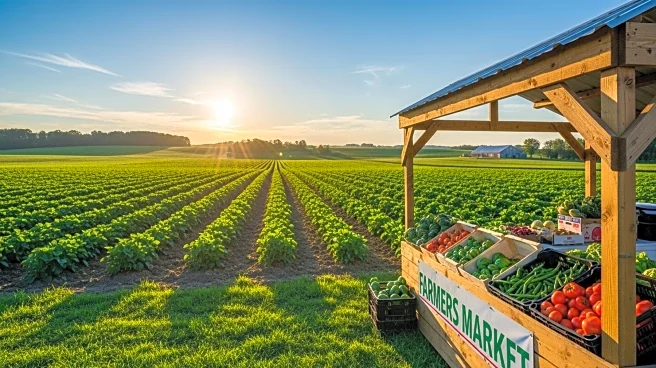What is the story about?
What's Happening?
Farm Credit Canada has released its 2025 mid-year report on farmland values, revealing a varied landscape across the country. The report indicates an average increase of 6% in farmland values during the first half of 2025. However, this average masks significant regional differences. The western provinces, particularly Manitoba, saw the most substantial increases, with Manitoba experiencing an 11.2% rise. In contrast, eastern provinces like Ontario and British Columbia reported no change in farmland values. The report highlights a slowing growth trend compared to previous years, with a 10.4% increase over the 12 months from July 2024 to June 2025, slightly up from a 9.3% increase in the previous year. Despite lower commodity prices, demand for farmland remains strong, driven by long-term confidence in the agriculture sector and limited land supply.
Why It's Important?
The report's findings are significant for the agricultural sector, indicating a stabilization in farmland values after years of rapid growth. This stabilization could impact investment decisions and financial planning for farmers and agricultural businesses. The uneven growth across provinces suggests regional disparities in agricultural opportunities and challenges. For instance, provinces with no growth may face economic pressures, while those with increases could see more investment and development. The report also notes a decline in farm cash receipts, particularly in grain and oilseed revenues, which could affect farmers' profitability and influence future land value trends. Understanding these dynamics is crucial for stakeholders in the agriculture industry, including policymakers, investors, and farmers, as they navigate the evolving economic landscape.
What's Next?
Looking ahead, the interplay between interest rates, farm revenues, and land availability will continue to influence farmland values. Stakeholders will need to monitor these factors closely to make informed decisions. The expected decline in grain and oilseed receipts in 2025 could further impact land values and agricultural profitability. Policymakers may need to consider strategies to support regions experiencing stagnation in land values to ensure balanced economic growth across the country. Additionally, the ongoing demand for farmland suggests that investment opportunities remain, particularly in regions with strong growth prospects.
AI Generated Content
Do you find this article useful?













